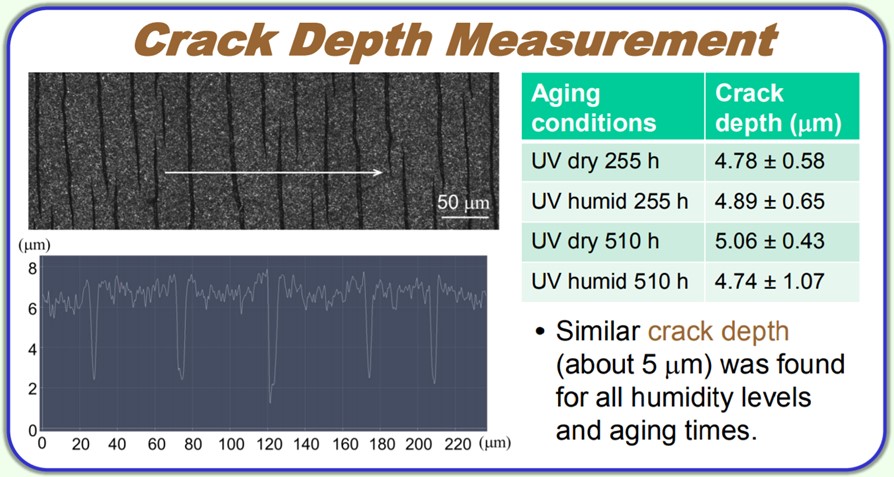Investigating Surface Cracking on PV Module Backsheets
DuraMAT is developing a method to investigate surface cracking of photovoltaic (PV) backsheets at small strains to quantify cracking propensity of different backsheets.
We monitor surface changes of the backsheets while applying a small strain to the sample after exposure to conditions proposed in IEC 62788-7-2. The ability to detect problems at a small strain is critical to predicting field failure because large strains cannot be imposed on the backsheet of a module in the field.
Thus, when channel cracks (fragmentation) appear on surface of the aged backsheet with a critical strain lower than ~4%, it is probable that this backsheet tends to crack during outdoor exposure.
Core Objective
Location
National Renewable Energy Laboratory, National Institute of Standards and Technology, and DuPont
Applications
We hope this testing method will be able to detect and evaluate materials susceptible to cracking prior to deployment. When fielded, applied strains arising from mechanical bending, thermal expansion differences, or from the manufacturing process will be very low. For more confidence in the testing methods to the field, we need to test in this relevant regime.
Availability
This capability is available to almost anyone, but we’ll need to negotiate scope and purpose.
References
Kim, J.H.; Lyu, Y.; Fairbrother, A; Wang, CA; Gu, X. (2017) “Fragmentation test for crack propensity evaluation of PV backsheets.” 4th Atlas/NIST Workshop on Photovoltaic Materials Durability, December 2017.
Lin, C.C.; Lyu, Y ; Hunston, D.L.; Kim, J.H.; Wan, K.T.; Stanley, D.L.; Gu, X. (2015) “Cracking and delamination behaviors of photovoltaic backsheet after accelerated laboratory weathering.” Proc. Of SPIE. Vol. 963 956304-1.
Contact
To learn more about this capability, Michael Kempe.
